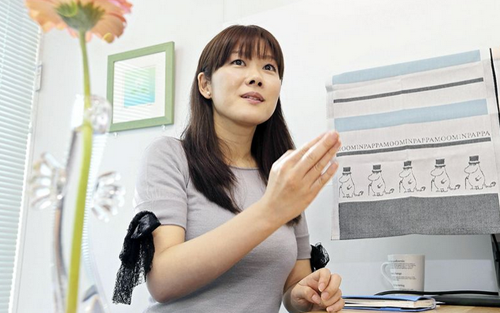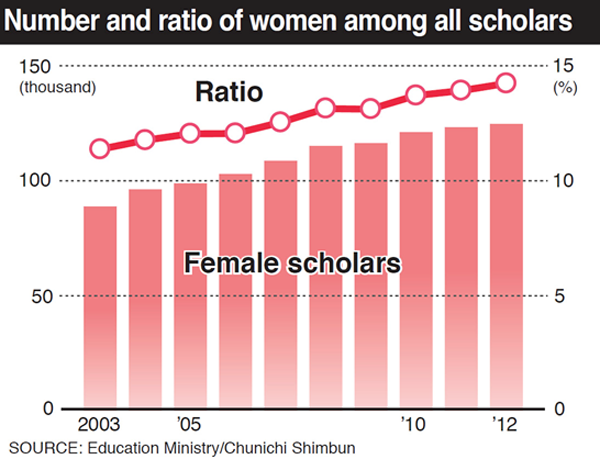博文
小保方晴子的成长史
 精选
精选
||

如同时下盛开的樱花一样,它来得突然,异常美丽;凋零时亦很匆忙,令人唏嘘慨叹。小保方晴子会坚持继续追求真理,履行她的诺言“为人类社会贡献10年、100年”吗?
4月1日,日本理化研究所(RIKEN)主席、诺贝尔奖获得者野依良治(Ryoji Noyori)宣读了对小保方晴子的独立审查结果,报告称小保方晴子发表在《自然》杂志上有关STAP细胞的两篇论文存在严重的学术不当行为。消息如同愚人节彩蛋一样,震惊了整个世界。
随后,小保方晴子通过一份纸质申明表达自己的不满,并认为日本理研研究所的调查结果是“不可接受的”,坚称“没有恶意犯错”,同时她称要通过律师进行申诉。目前,《自然》杂志方面仍未对该事件进行官方表态,称“现阶段我们还不能进行评论”,但他们已高度重视这个事件,并会进行独立的审查。
媒体:从惊喜走向遗憾
1月30日,小保方的两篇论文同一时间发表在《自然》杂志后,全球各大主流媒体均报道了该项突破性的研究。日本媒体尤为突出,除了报道这项研究具有革命性的意义外,还为大家讲述了一个美女科学家的励志故事。日本新闻网(Japan News)两则报道更是为大家勾勒出小保方似乎从小就能成为大科学家的形象来。两则故事从小保方很小的时候就具备了一个优秀科学家的潜质讲起,再讲到小保方如同其他成功者一样,在困难面前斗志昂扬,最后终于成功。也许小保方从小的确就有这些特质,但是日本媒体的报道显然是在有意渲染,这可谓别有用心,或许他们急于想树立一个女性科学家的典范来。小保方因此被贴上了许多标签,“美女科学家”、“年仅30岁”、“年轻有为”以及“Rikejo”等称号,Rikejo是日本对女性科学家或女学生的一种称呼。在这里形容小保方肯定是褒扬了。
然而,随着外界质疑声不断,小保方论文造假几定成为事实时,一时间备受关注的小保方自然同样成为了各国媒体人士信息挖掘的对象,因为她的故事所带来的媒体效应,能产生价值与利润,自然逃不过各国记者的“法眼”。在调查过程中,小保方的博士论文也被发现涉嫌剽窃,毕业论文中有很多地方是通过其他文件复制和粘贴的过来,媒体毫不客气地判定她的博士学位可能会遭到撤消,但随后遭到早稻田大学的否认。早稻田大学认为小保方的博士论文主要是涉及干细胞多能性方面的研究,与她此次在《自然》杂志发表的两篇文章无直接关系。令人扼腕的是,日本新闻网那两篇“褒扬”的文章随后也被删除。本文通过其他渠道获取到这两篇文章,有兴趣见文末,或许可以找到新线索。
“理科女生”的成长简史

1983年6月29日,小保方晴子出生于日本松户市,根据小保方小学时期的书法老师介绍,小保方从小思惟活跃、好奇心强。“她总是问一些很奇怪的问题,例如她问我Kanji(日本汉字)是怎么来的”,这位65岁的女老师回忆道。她给小保方的评价是,“小保方的思维很独特”。进入中学后,小保方就开始对再生医学感兴趣,之后她进入日本著名高等学府早稻田大学,在该校理工学部应用化学学科攻读学士学位,从事再生医疗的相关研究。2006年大学毕业的小保方继续在早稻田大学攻读博士学位。读博早期,小保方是在哈佛大学医学部的Charles Vacanti教授的研究室度过的,从事万能细胞(ips细胞)的研究。事实上,在她的成长史中,她也饱受日本干细胞领域的顶尖科学家、2012年诺贝尔生理或医学奖获得者山中伸弥(Shinya Yamanaka)的影响。
留学期间,她就有了STAP细胞的设想。刚开始,小保方邀请美国学者一起从事这方面的研究,但是遭到拒绝,因为小保方那时还只不过是哈佛大学的一名博士生而已,没有任何学术成就。2010年,小保方同先后同日本干细胞科学家笹井芳树(Yoshiki Sasai)以及最早克隆出小鼠的日本科学家若山照彦(Teruhiko Wakayama)谈论自己在这方面的想法,刚开始若山照彦还是有所顾忌的,他对《日本新闻》吐露了自己的心声,“刚开始,我并不相信她所说的,但是我想如果这项研究被验证是正确的,那么我们就可凭借此项研究超过美国的同行”。就这样两个顶级科学家成为了小保方这项研究的骨干成员。
2013年3月份,小保方那是还只有29岁,但她已成为日本理化学研究所的发生和再生科学综合研究中心(CDB)的主任,这也是该研究中心自2000年成立以来,第二位最年轻的科学家。小保方的科研前途可谓是一片光明,从她的教育经历以及履历很难看出学术造假的动机。
事实上,很多人都可能忽略了一点是,小保方这项研究刚开始发表的时候(2010年),是被《自然》杂志拒绝过的,理由是“结论不可信”,同时小保方还收到审稿人的一封带有“诋毁”的邮件,邮件称“小保方的这项研究简直是在侮辱细胞生物学。”遭拒的小保方饱受打击,而她为何在此次拒稿之后,仍会“造假”,并执意将这项研究再次发表在《自然》杂志上?我们也不得而知,此处疑点多多,具体情况到底是怎样,恐怕只有小保方自己清楚。
日本女科学家的现实
当小保方的论文发表后,不仅引起了媒体的广泛关注,贴上各种标签,日本政府也高度赞扬了这一重大“突破”。日本文部科学大臣下村博文(Hakubun Shimomura)称,领导这项“突破性”的研究竟是一位年轻的女科学家,从某种意义上看,这是整个日本的骄傲。他还说日本政府今后将为年轻的女科学家提供更为有利的科研环境。

事实上,下村博文是想通过小保方为日本全国女性科学家树立一个良好的形象,因为同其他发达国家相比,日本女性科学家比例几乎一直处于垫底的位置,尽管近年来日本政府努力地纠正这种比例失衡的情况,但是效果仍旧不佳。
日本媒体一再渲染“女性科学家”“年仅30岁”,在肯定小保方的同时,也在刺痛着广大日本女性科研工作者。小保方并不是大多数日本女性科学家的写照,实际上,大多数日本女性科学家在这个年龄,面临的压力不仅存在于学术考核上,还有生活的压力以及传统观念对女性科学家的固有偏见,压力以及偏见造成日本女性科学家严重不足。有项数据显示,2009年日本女性科学家的比例只有13%,而且高校中大部分行政上的琐事,都是由女性来承担的,这使得她们游离在科研一线之外。《纽约时报》2013年的一篇文章称,在日本女生心中,日本女性科学家是那种“没有男性喜欢,头发乱蓬蓬的样子”。所以她们即使进入高校后,也很少选择理工科。而且女性一旦进入科研领域,她们的婚恋问题、科研工作以及生活压力可能是男性科学家的好几倍。此外,在男权主导的科研世界中,女性科研工作者往往需要付出更多的努力才能够获得别人的认可,这种想法也根植于日本女性的脑海中。
曾被视为一颗熠熠生辉的科研新星,被日本政要描述为“日本的骄傲”,小保方此次论文造假不仅给关注她的人迎头痛击,同时也是对日本原本弱小的女性科研群体带来不小的打击。她能否挽回自己的荣誉呢?此前小保方向媒体透露,尽管干细胞研究工作压力大,但她将“努力地为人类社会贡献10年、100年”。她是否仍旧坚持追求真理,履行她的诺言?我们拭目以待。
如下为日本新闻网(Japan News)2月份为小保方撰写的两篇新闻,已删除,提供原文,以飨各位读者。
Obokata had free way of thinking since childhood
The Yomiuri ShimbunOSAKA—Haruko Obokata “comes from a chemistry background and has an ability to look at her own data carefully and without preconceived ideas,” according to Yoshiki Sasai, deputy director of the Riken Center for Developmental Biology in Kobe.
“Her research has borne fruit thanks to her free thinking and the fact she’s done it in an environment with strong support,” Sasai said at a press conference about the research.
Obokata comes from Matsudo, Chiba Prefecture. Her free thinking already manifested itself during her primary school days, as recalled by a teacher of a calligraphy school she used to attend.
“She would ask me surprising questions, like, ‘Tell me about the origin of this kanji,’” the teacher, 65, said. “She had a unique way of thinking.”
It was in March last year that she became a research unit leader at the center. She was 29 at the time and the second-youngest person to be appointed to the post in the history of the center, which was established in 2000.
From the start, the center has provided an environment in which young researchers can work with their unique views. Thus, how to use each laboratory is up to the research unit leader. The walls in Obokata’s lab are painted yellow and pink, and the equipment for experiments are adorned with stickers of Moomin.
Research unit leaders are hired through open recruitment and work under the annual salary system. They sign a one-year contract with the center, with renewal depending upon their research performance. Currently, there are 33 leaders in 40 research labs, with some of the leaders in charge of more than one lab. Six of the leaders are women, including Obokata and Masayo Takahashi, who is scheduled to do clinical research on transplanting retina cells made from induced pluripotent stem (iPS) cells to humans.
Obokata has come under the spotlight as a researcher of regenerative medicine. But when she was an undergraduate majoring in applied chemistry at Waseda University’s faculty of science and engineering, the subject of her research was the cultivation of microbes in the sea for use in the development of medicine.
As she was about to decide on her research theme as a postgraduate student, her academic adviser, Prof. Satoshi Tsuneda, asked her what she wanted to work on. Her answer was that she wanted to pursue regenerative medicine, which had been her dream since her high school days.
“It was a direction I didn’t expect at all,” Tsuneda said.
Obokata is apparently so involved with her research that she always reserves a spot in her mind to contemplate it—be it during bath time or while watching a film.
“There were days when I thought I would quit or when I cried all night, but every day I thought I’d try only today, and only tomorrow,” Obokata said at the press conference.
But her life is not only about research. She always strives to be fashionable as well.
‘Rikejo’ scientist triumphed over setbacks
A 30-year-old Japanese woman has led an international team to a breakthrough in stem cell research.
Haruko Obokata of the Kobe-based Riken Center for Developmental Biology came up with the idea for her research six years ago. She later developed a surprisingly simple method to create stimulus-triggered acquisition of pluripotency (STAP) cells, which can develop into various cells.
Her paper was initially rejected by the British journal Nature, which was not convinced of her findings, but thanks to the helping hands extended by some experienced Japanese researchers, her research has finally been featured in the journal.
After earning a bachelor’s degree in science and engineering at Waseda University in 2006, Obokata started her research in regenerative medicine, a field she had wanted to work in since her high school days.
She made up her mind to devote herself to research after listening to a lecture by Kyoto University Prof. Shinya Yamanaka, a Nobel Prize laureate who announced in the same year that he had developed a technique to produce induced pluripotent stem (iPS) cells.
It was in 2008 while studying at Harvard University that Obokata came up with the idea of reprogramming cells by exposing them to external stresses—the inspiration that eventually led to her latest achievements.
During experiments, Obokata found that she could produce more stem cells than expected when mouse cells went through ultrafine glass tubes.
“I wondered if the stimuli that mouse cells were exposed to while passing through a very narrow space might have worked as a catalyst [for creating more stem cells],” Obokata said. She continued her research based on this new viewpoint.
Obokata asked American experts to undertake joint studies, but no one would agree to work with a novice researcher with no major academic achievements. Obokata was finally given a helping hand in 2010 by Teruhiko Wakayama, who was working at Riken’s research center at that time. Wakayama, 46, was the first person in the world to clone a mouse. He is now a professor at Yamanashi University.
Obokata asked him to collaborate when she visited him without an appointment.
“At first, I was not convinced of what she was saying, but I thought we could surpass American researchers if I could verify her research,” Wakayama said.
Obokata continued various experiments after she became a guest researcher at the center in 2011. She added stresses to the cells through such methods as adding toxins or withholding nutrition. She created a mouse through cells grown from STAP cells with Wakayama in the winter.
She submitted a paper to Nature, the authoritative science journal. However, not only was the report rejected, but she received an e-mail from a scientist who reviewed the report, saying she was taunting the history of cell biology. Obokata was depressed but had support from others including Yoshiki Sasai, 51, a top stem cell scientist and the center’s deputy director.
With that support, Obokata reanalyzed the data and resubmitted the article last March and it was accepted.
All five staff members in her laboratory are women. The walls are pink and yellow, and stickers of her favorite illustrated character Moomin can be seen. Her lab coat is not the usual white garment but a kappogi traditional Japanese smock that her grandmother gave her.
“I feel the support of my family when I wear this,” Obokata says.
Obokata is a stunning success amid the popularity of “rikejo,” an abbreviated Japanese term for female science students and scientists.
“Many women have been active in the field of developmental biology. It’s fabulous that a small bud found by a young scientist ripened through others’ support,” said.
There is certain to be severe competition in this area around the world.
“I feel pressure but I want to advance step by step thinking how I can contribute to human society 10 years from now, 100 years from now,” Obokata said.
本文部分内容参考《小保方晴子涉嫌造假事件,折射日本女科学家窘境》一文,亦为己所作;同时部分信息亦来自日本新闻网的这两则新闻;本文提供的信息及数据尽量做得准确公正,但未一一核实,仅供参考。
原文始发表于:http://www.biodiscover.com/news/celebrity/108983.html
小保方事件追踪
https://blog.sciencenet.cn/blog-618627-781918.html
上一篇:RIKEN:小保方论文造假属实
下一篇:诺奖彩蛋!2014年汤森路透诺奖预测 多位华人学者闪亮入列